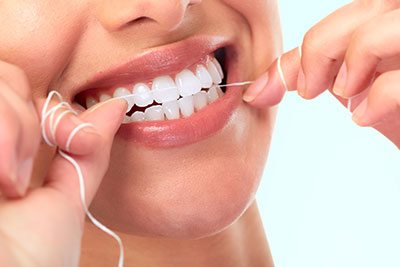The Fuss about Floss

Every dental hygiene article will tell you that an adequate oral hygiene regime includes brushing your teeth twice a day and flossing at least once a day. However, according to data from the latest National Health and Nutrition Examination Survey, which was compiled in 2016, it states 32.4 % of American adults over the age of 30 never floss. The results also showed that 37.3 % of these adults floss but not everyday; and only 30.3 % floss on a daily basis. Other interesting findings include more men failed to floss when compared to women and low-income participants are less likely to floss than those in higher income brackets. But why do these statistics matter? What is the fuss about flossing? For one thing, these statistics are an indicator of why the Center of Disease Control finds a high prevalence of gum diseases in America, especially in the Southern States. What is gum disease? Gum disease in its most common form is called gingivitis. The symptoms include tender and swollen gums that bleed easily when brushed. Gingivitis can be caused by the failure to maintain oral hygiene. When someone neglects their oral hygiene, food particles can get stuck between the teeth and mix with saliva and bacteria in the mouth. This mixture forms plaque, which can harden into tartar that can not be removed through normal toothbrushing. The bacteria in plaque and tartar create acids that eat into our tooth enamel and create holes called cavities. Bacterial infection and tooth decay fester in cavities and can affect the gums, causing gingivitis. If left untreated, gingivitis can develop into a more advanced stage of gum disease, which can cause nearly irreversible damage to the gums, teeth and jawbone. Flossing ensures that food particles do not get stuck between our teeth, where our toothbrush can’t reach, and cause cavities. Preventing gingivitis is also a preventative measure against a number of other health issues, such as respiratory diseases, which can be caused by bacteria in the mouth affecting the lungs. Tips for flossing: Floss before bedtime as this is when you will get the best result as it is after you have eaten for the day. Start with 18 inches of floss and work it around each middle finger until you have around two inches. Hold the floss taut between your thumb and index finger and gently move it up and down between your teeth. Carefully glide the floss around the base of each tooth, going beneath the gum line. Use new sections of floss for each new tooth. Remove floss from your teeth by mimicking the same up and down motion.
